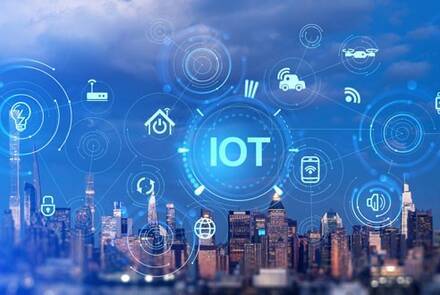Best Practices for IoT Data Security
Introduction
The Internet of Things (IoT) is a revolutionary set of technologies where digital information is analyzed to inform decision-making and better manage the way humans interact with their physical environments and optimize urban living. Smart Cities are combining data from IoT devices and sensors, and using data analytics to enhance services, manage resources, and improve the overall quality of life for their citizens.
With IoT technologies increasingly being used to manage activities which are essential to municipal operation, there is critical concern about the security of IoT data. Smart Cities are essentially a vast web of data flows, encompassing everything from traffic management to healthcare services, energy distribution to environmental monitoring. Within this web lies hugely sensitive information, and with it, the inherent risks of data breaches, cyberattacks, and privacy violations.
Here we explore seven best practices for IoT data security within the context of Smart Cities. It delves into strategies, technologies, and approaches aimed at safeguarding this data, ensuring privacy, and mitigating cybersecurity risks.
Strategic Alignment:
- Aligning data security strategies: This involves ensuring that data security measures are in line with the overarching goals and objectives of a Smart City initiative. It's important that security efforts support and do not hinder the city's development.
- Integrating security considerations: This means embedding security considerations into the design and implementation of IoT infrastructure from the very beginning. This creates a unified and secure framework where security is not an afterthought but an integral part of the system.
- Collaborating with stakeholders: Collaboration is key. Engaging stakeholders from various sectors ensures a coordinated approach to data security. It brings together the expertise needed to create a holistic security strategy.
Encryption and Access Control:
- Robust encryption mechanisms: Data should be encrypted both during transmission and while it's stored. Encryption ensures that even if data is intercepted, it remains unreadable without the proper decryption keys.
- Strong authentication methods: Multi-factor authentication adds an extra layer of security by requiring users to provide more than just a password to access sensitive information.
- Role-based access control (RBAC): This method restricts data access based on users' roles and responsibilities. It limits the risk of unauthorized exposure, ensuring that only individuals who need certain data can access it.
Data Privacy and Compliance:
- Adhering to regulations: Compliance with data protection regulations is crucial to safeguard individuals' rights and maintain trust. For instance, GDPR in Europe or HIPAA in the healthcare sector.
- Data anonymization and aggregation: These techniques protect individual privacy while still allowing organizations to derive valuable insights from data. It involves removing or obfuscating personally identifiable information (See also: The Role of Big Data Analytics in Cybersecurity).
- User consent and opt-out: Respecting individuals' control over their data is vital. Offering clear options for users to provide consent and opt out of data collection is an essential part of privacy protection.
Threat Detection and Incident Response:
- Real-time monitoring and intrusion detection: These systems continuously monitor network traffic and system activities to identify potential cyber threats promptly.
- Incident response protocols: Having well-defined protocols in place ensures that if a security breach occurs, the response is swift and effective in mitigating and containing the breach.
- Penetration testing and vulnerability assessments: Proactive identification of weaknesses through testing and assessments helps in addressing potential threats before they can be exploited.
Secure Device Management:
- Secure onboarding and authentication: Ensuring that only authorized devices can connect to the network is critical to prevent unauthorized access.
- Remote device management: This allows for timely firmware updates, ensuring that security patches are applied promptly to address vulnerabilities.
- Secure boot processes and device authentication: These mechanisms guarantee the integrity of connected devices by ensuring they haven't been tampered with or compromised.
Data Lifecycle Management:
- Data retention policies: Developing policies for data retention is essential. Storing sensitive data for only as long as necessary reduces exposure.
- Data destruction procedures: Secure procedures for disposing of data on end-of-life devices are crucial to prevent data leaks.
- Data masking, tokenization, and encryption: These techniques maintain data confidentiality throughout its lifecycle, from collection to storage and transmission.
Continuous Improvement and Adaptation:
- Regular review and enhancement: Continuously reviewing and improving data security policies and practices is necessary to stay ahead of emerging threats.
- Adapting to evolving threats and technology: Security practices need to evolve as threats change and technology advances. Ongoing training and awareness programs are essential to keep personnel informed.
- Information sharing and collaboration: Collaborating with other Smart Cities and sharing information helps strengthen data security measures collectively, as threats can affect multiple cities.
Summary
In the realm of Smart Cities and the Internet of Things (IoT), ensuring robust data security is paramount. By adhering to these comprehensive security plan, Smart Cities can not only harness the full potential of IoT technologies but also protect sensitive data, preserve privacy, and remain protected against the ever-evolving threats in our digitally interconnected world.
For more information about Trigyn's Smart Cities and IoT Services, Contact Us.






